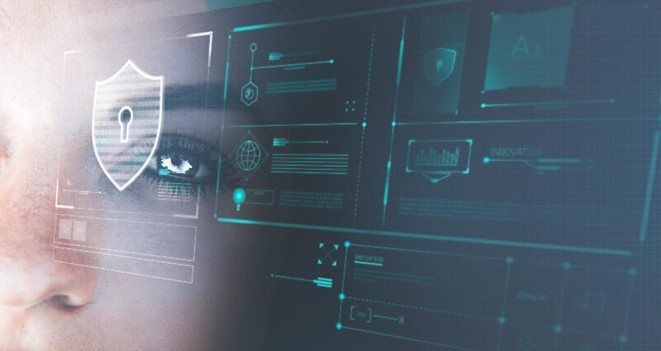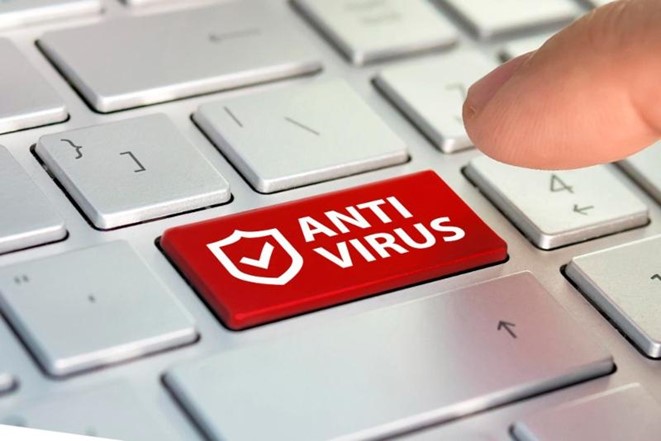Implementing cybersecurity tools appropriate to corporate needs within organizations’ cybersecurity strategies is essential to ensuring protection against threats and cyberattacks.
Why is it essential for companies to implement cybersecurity tools?
Cybersecurity tools offer robust protection against various threats, enable early detection of risks and attacks, and enable proactive response to security incidents.
Threats and cyberattacks
Cybersecurity has become a top priority for businesses of all sizes. Cyberattacks are becoming more sophisticated and frequent, posing a significant threat to corporate data’s integrity, availability, and confidentiality.
Common threats include malware, ransomware, phishing, and denial-of-service (DDoS) attacks. The success of each of these attacks comes with severe consequences, such as the loss of critical data, disruptions to business operations, and damage to corporate reputation.
Malware, including viruses, worms, and Trojans, infiltrates company systems, corrupting files and stealing sensitive information. Ransomware is particularly dangerous because it encrypts company data and demands a ransom to release it.
Phishing attacks, conversely, use deceptive emails to obtain login credentials and other sensitive information from employees.
Finally, DDoS attacks can overwhelm company servers with malicious traffic, causing service disruptions and negatively impacting productivity.

Security risks in unprotected companies
Companies that do not implement adequate cybersecurity tools expose themselves to significant risks. One of the most apparent risks is data loss. In today’s environment, data is one of a company’s most valuable assets, and its loss can seriously impact operations and the ability to make informed decisions. In addition, the stolen data can be used to carry out fraud, identity theft, and other criminal acts.
Another significant risk is disruption to operations. Cyberattacks can disrupt systems, impacting productivity and, correspondingly, corporate finances. For example, a ransomware attack can paralyze operations until the ransom is paid or the effects of the attack are reversed. In contrast, a DDoS attack can render the company’s websites and online services inoperable.
Another critical risk is the loss of trust and reputation. Security breaches often damage a company’s reputation and cause customers, partners, and other stakeholders to lose confidence in its ability to protect their data. This perception implies the loss of some business and long-term damage to the brand.
Finally, unprotected companies risk incurring legal and regulatory penalties. Data protection laws and regulations, such as the GDPR in Europe, require companies to implement adequate security measures to protect personal data. Failure to comply with these laws carries significant penalties and legal action.
Cybersecurity tools to protect your business
Among the variety of cybersecurity support tools that an organization can implement to protect its systems, one group stands out for its effectiveness and efficiency:
Antivirus
Antivirus software is one of the most relevant and widely used cybersecurity tools. Its primary function is detecting, blocking, and removing malware before it can cause harm. Modern antivirus uses advanced techniques such as signature-based detection, heuristics, and artificial intelligence to identify and neutralize a wide range of threats, including viruses, worms, Trojans, spyware, and ransomware.
- Signature-based detection. This technique uses a database of known malware signatures to identify threats. When antivirus software scans a file, it compares its signature to those in the database, and if it finds a match, it blocks and removes the threat.
- Heuristic. Heuristic methods allow antivirus software to identify suspicious behavior and code patterns that could indicate the presence of new or unknown malware. This technique is essential for detecting zero-day threats, which do not yet have known signatures.
- Artificial Intelligence and Machine Learning. Modern antivirus programs incorporate AI and machine learning technologies to improve real-time threat detection. These technologies can analyze large volumes of data and learn to identify malicious behavior patterns, even without a known signature.

Firewall
Firewalls are critical tools for cybersecurity. They act as a barrier between the company’s internal network and external networks, such as the Internet. Their primary function is to control and filter incoming and outgoing network traffic, allowing only authorized connections and blocking unauthorized access.
- Hardware and software firewalls Firewalls can be deployed as dedicated hardware appliances or software on servers and computers. Hardware firewalls are ideal for protecting the entire enterprise network, while software firewalls offer additional protection on individual devices.
- Packet Filters Firewalls inspect every data packet entering or leaving the network, comparing it to predefined rules. If a packet complies with the rules, access is allowed. Otherwise, it is blocked.
- Next-Generation Firewalls (NGFW). NGFWs combine traditional firewall capabilities with advanced features such as deep packet inspection (DPI), intrusion prevention (IPS), and application-based threat protection.
Intrusion detection systems
Intrusion detection systems (IDS) and intrusion prevention systems (IPS) are essential tools for monitoring and protecting corporate networks against malicious activity. These systems analyze network traffic for behavior patterns indicating an attempted intrusion or attack in progress.
- IDS (Intrusion Detection Systems). IDSs monitor network traffic in real-time and generate alerts when they detect suspicious activity. They can be passive, simply alerting security administrators, or active, automatically responding to threats.
- IPS (Intrusion Prevention Systems). IPS detects intrusions and takes steps to prevent them, such as blocking malicious traffic or applying additional firewall rules. IPS often integrates with other security systems to provide in-depth defense.
- Signature and behavior analysis.
IDS and IPS use signature analysis techniques to identify known threats and behavioral analysis to detect anomalous activity that could indicate new or unknown attacks.
Automated Cybersecurity Monitoring Tools
Automated monitoring is crucial to maintaining the security of corporate infrastructures. These tools allow businesses to continuously monitor their systems and networks for unusual or malicious activity and respond quickly to security incidents.
Security Information and Event Management Systems (SIEM)
SIEM solutions collect and analyze event data and logs from multiple sources on the enterprise network. They use advanced algorithms to detect suspicious behavior patterns and generate real-time alerts.
Incident Response and Analysis Tools
These tools allow security teams to quickly analyze security incidents and take the necessary steps to mitigate them. This can include identifying the incident’s root cause, containing the threat, and recovering the affected system.
Cloud monitoring
Automated monitoring tools for cloud environments are essential with the increased use of cloud services. These tools monitor cloud activity, detect threats, and ensure compliance with company security policies.
Tools for Continuous Threat Exposure Management (CTEM)
To effectively protect their systems, organizations can’t just manage the security of their internal infrastructure. Controlling exposed vulnerabilities available to anyone allows you to detect open gaps and implement a proactive security strategy in the organization.
Continuous Threat Exposure Management (CTEM) solutions monitor the different layers of the web to locate those publicly exposed vulnerabilities, such as leaked data or credentials, and detect the open breaches that caused them.
The most evolved CTEM tools, such as Kartos Corporate Threat Wathbots, use Artificial Intelligence and Machine Learning technologies to analyze and clean their data and provide highly accurate information about imminent threats.
Identity and access management tools
Identity and access management (IAM) is a crucial component of enterprise cybersecurity. IAM tools ensure that only authorized users can access critical business resources and data and maintain strict controls over who can do what within the system.
- Multi-factor authentication (MFA). MFA adds an extra layer of security by requiring users to provide more than one form of verification before accessing systems. This can include a combination of passwords, verification codes sent to mobile devices, fingerprints, or other forms of biometric authentication.
- Privileged access management (PAM). PAM tools allow companies to control and monitor access management to privileged accounts, which have elevated permissions within the system. This includes implementing role-based access policies and logging all privileged account activities.
- Single Sign-On (SSO) Solutions. SSO allows users to access multiple applications and systems with a single login credential. This simplifies password management, improves the user experience, and provides centralized security controls.
Kartos: Corporate Cyber-Surveillance Solution for Continuous Threat Exposure Management (CTEM)
Kartos Corporate Threat Watchbots is a monitoring tool for Continuous Threat Exposure Management (CTEM) developed by Enthec to protect organizations.
Using its army of bots deployed across the Web, Dark Web, and Deep Web, Kartos scours forums and repositories to locate leaked information, exposed vulnerabilities, and open breaches of organizations.
Among its unique capabilities in the cybersecurity tools market, Kartos stands out for eliminating false positives in search results thanks to tag technology, which uses self-developed Artificial Intelligence.
In addition to protecting the organization, Kartos allows third parties to be controlled in real-time and continuously for the duration of the business relationship.
If you want to learn more about how Kartos Corporate Threat Watchbots can help you protect your organization and control risks in your value chain, please do not hesitate to contact us.


